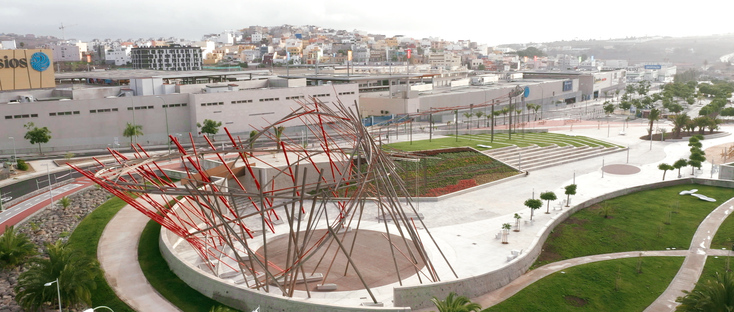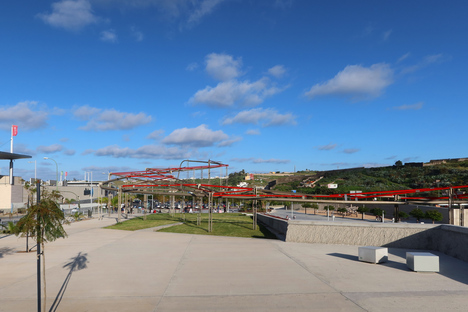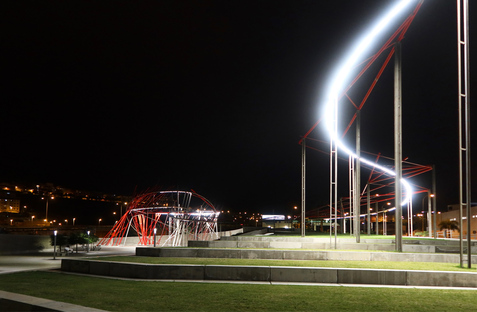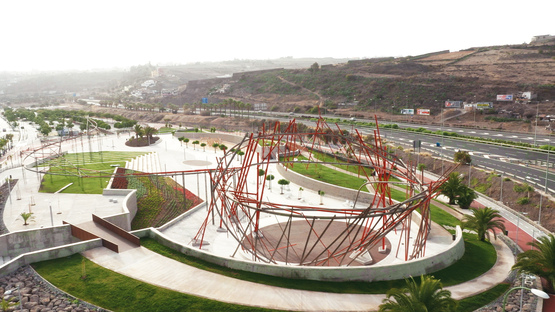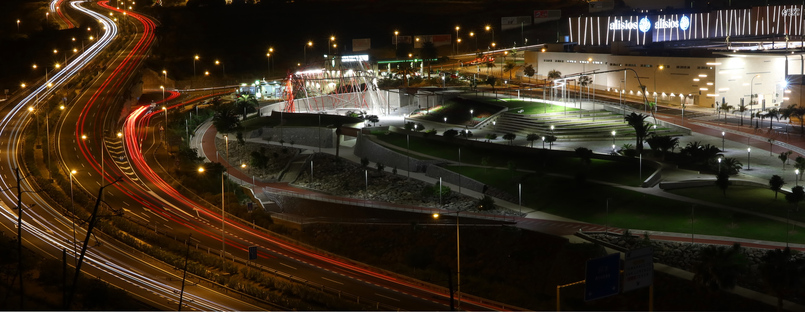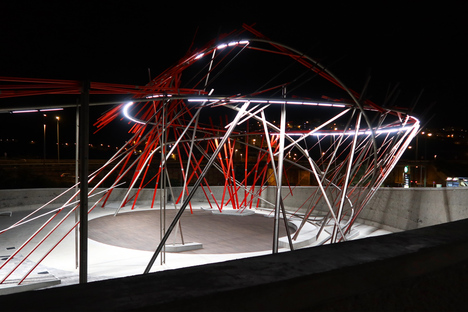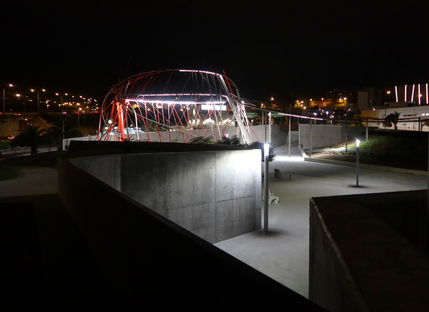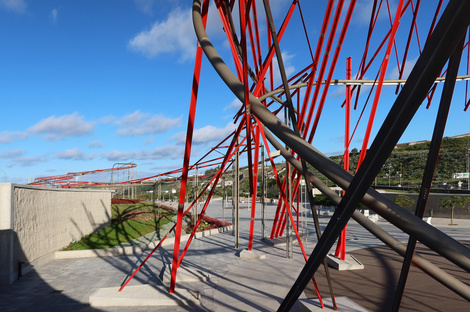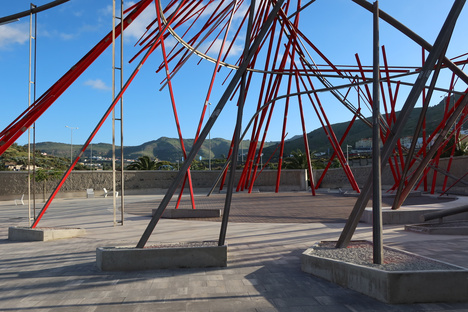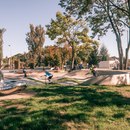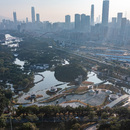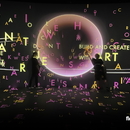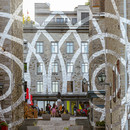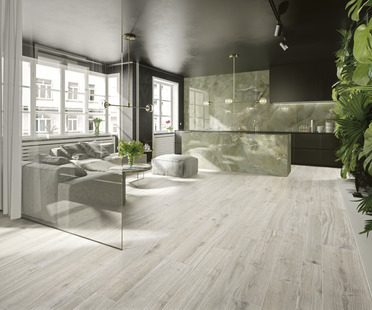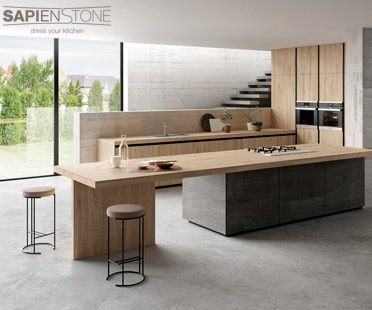16-02-2022
A sculpture park in Las Palmas de Gran Canaria
Juan E. Correa, Héctor Martínez,
- Blog
- Landscaping
- A sculpture park in Las Palmas de Gran Canaria
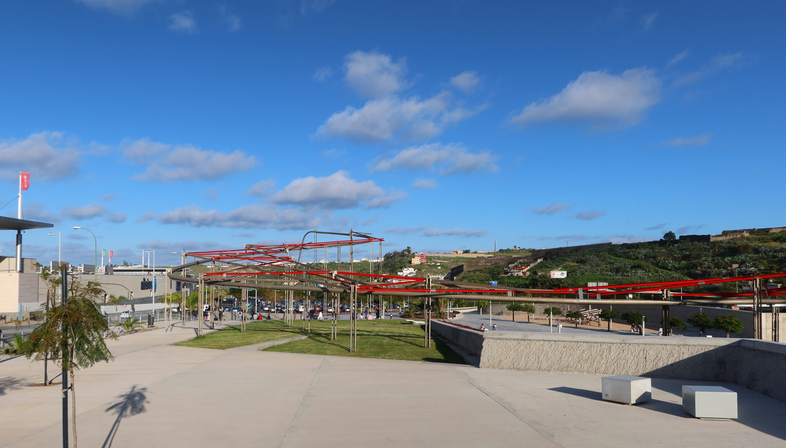 We are all familiar with the thaumaturgical power of art in public space. A sculpture positioned properly in relation to its surroundings can, like a needle in an acupuncture session, become a trigger releasing the energy of a place. This is well-known to architects who work in the urban landscape, such as Hector Martínez, appointed by the local government to redevelop the park in the Tamaraceite district of Las Palmas de Gran Canaria: a green area located between Los Alisios shopping centre and the highway, practically a "no man’s land" between two non-places, as French anthropologist Marc Augé would say. Working with artist Juan E. Correa, Martínez has come up with a project that takes into consideration all the aspects of the place. The pair designed a huge sanded steel sculpture painted glossy red measuring 20 x 132 x 39.5 metres and a park featuring architectural elements and pathways.
We are all familiar with the thaumaturgical power of art in public space. A sculpture positioned properly in relation to its surroundings can, like a needle in an acupuncture session, become a trigger releasing the energy of a place. This is well-known to architects who work in the urban landscape, such as Hector Martínez, appointed by the local government to redevelop the park in the Tamaraceite district of Las Palmas de Gran Canaria: a green area located between Los Alisios shopping centre and the highway, practically a "no man’s land" between two non-places, as French anthropologist Marc Augé would say. Working with artist Juan E. Correa, Martínez has come up with a project that takes into consideration all the aspects of the place. The pair designed a huge sanded steel sculpture painted glossy red measuring 20 x 132 x 39.5 metres and a park featuring architectural elements and pathways.The idea is the product of Correa’s intention of using "space as a project tool" and seeking not to simply “sublimated” places in his work but use them to intensify users’ experiences. This is exactly what was needed in this 30 thousand square metre lot, which, without an energising action such as “Corrientes”, would soon have become a problematic site cut off from the dynamics of the city.
The sculpture is inspired by the reeds that grow wild in the landscape of Gran Canaria, bending gently under the island’s winds. Hence the name, meaning “currents of air”, because the sculpture moves constantly in response to the action of the wind: “Everything is in motion, and onlookers can contemplate this work in motion and – finding themselves inside it – interact with it”, as the artist says. He continues: “You have to understand that Circulación del aire is not so much a site-specific project as a project that generates a site. In that park in the Tamaraceite neighborhood, a sculpture has not been ‘placed’, but rather an intervention conceived from a “sculptural” point of view.
According to architect Héctor Martínez: "The sculpture was created on the scale of this space, which valorises it and ends up modelling it, giving it its singularity.”
Thus art plays a key role in transformation of the area and in users’ perception of the park. Perception of the sculpture itself also changes as users move around and walk through it, because the tubes are a metallic grey on the outside, turning red when seen from inside the park. The sculpture is lit up at night, transformed into a light installation eliminating the typical sensation of insecurity so often experienced in outdoor public places after dark.
Tamaraceite Park, designed by architect Hector Martínez and sculptor Juan E. Correa, succeeds in creating an impressive poetic space in which the urban landscape and art are perfectly integrated to produce a true place for the community.
Christiane Bürklein
Project: Héctor Martínez (architect), Juan E. Correa (artist)
Location: Las Palmas de Gran Canaria
Year: 2020
Images: Don Worry










